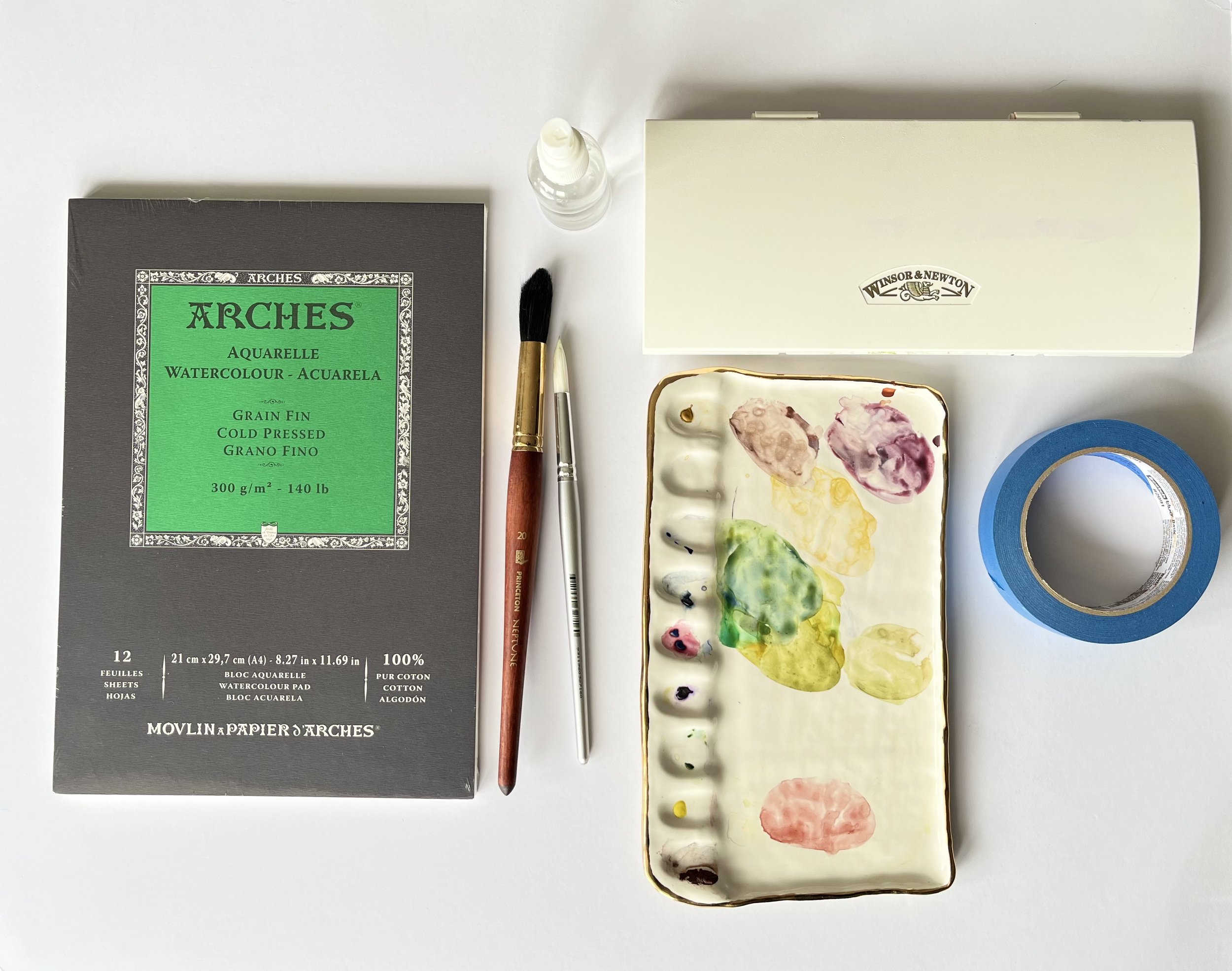Starting out with Watercolour
Every artist finds their preference with paint early on in their experimentation. It is almost a ‘gut’ feel when we begin to handle it with the brush, tools and paper. I found my love of watercolour because of its literal fluidity. I liked that it did its own thing and that is the thing with watercolour, it can be unruly but truly original. While you can make corrections on some things you get one good shot and if you stuff it up then the painting can be ruined. But don’t mistake that with the messy middle. Watercolour painting often comes together in the last 10 minutes or so.
Note - some links, but not all, contain affiliate links.
Here is what I wish I knew when I started with watercolour.
Use paper which can take the water. For me it is any brand which is a minimum of 300gsm/140lb in weight. Now good paper can really cost you and when you are playing with the paint to see what it does you don’t use good paper. If you are going to persevere with watercolour then expect to spend money on paper. Good or otherwise. Once you find your paper, and have upped the ante with the quality, do not go backwards. It will wreck your style. Take it from me.
Buy at least a decent paint - As with paper, good paint makes a huge difference in your result. I started out with a 46 pan set of Winsor & Newton watercolours which I picked up on eBay. You don’t need to buy a big set to start with. Perhaps just invest in a key set of colours and build up from there.
Find your brush type - Not only the brand but what you prefer to paint with. I paint with round brushes in the majority and use flat brushes in certain circumstances. Buy a good but basic set to experiment with and as you progress, try and invest in brushes which work best for you.
Buy a small water spray bottle - Use this to activate your pan paints as well as to clean your palettes (simply spray them and wipe with a tissue)
Use magic erasers to clear spots from your art piece - I can be a little slapdash and end up with spots of paint on my paper. Once I discovered that magic erasers can pick up the paint without rubbing (you don’t want your paper damaged) it changed my life. Simply spray the magic eraser a little with your spray bottle and dab away any spots.
Use Washi Tape to border your works - I use blue washi tape that I have picked up from a major Australian hardware store and this works a treat when bordering my paper before I start painting. It is the perfect stickiness to not ruin or mark your paper and it is relatively inexpensive.
Don’t muddy your colour mixes - More than three colours in your mix and you are starting to make your pigments muddy. Not always but sometimes. Watercolour pigments can range from transparent to opaque and how you mix them can affect your result.
Ceramic palettes are best for colour mixing - Yes, this does mean you can just use a plate. If you want something interesting, head to a charity shop and pick up something with a bit of personality.
Don’t expect to get it right the first time - Watercolour is about finding your style - how you handle your tools and get the paint onto the paper. No matter how many tutorials or classes you do, ultimately you have to find your approach and that takes time. And what you like to do in the beginning can change.
Good luck with starting out. It’s really about trial and error and what works for you.
